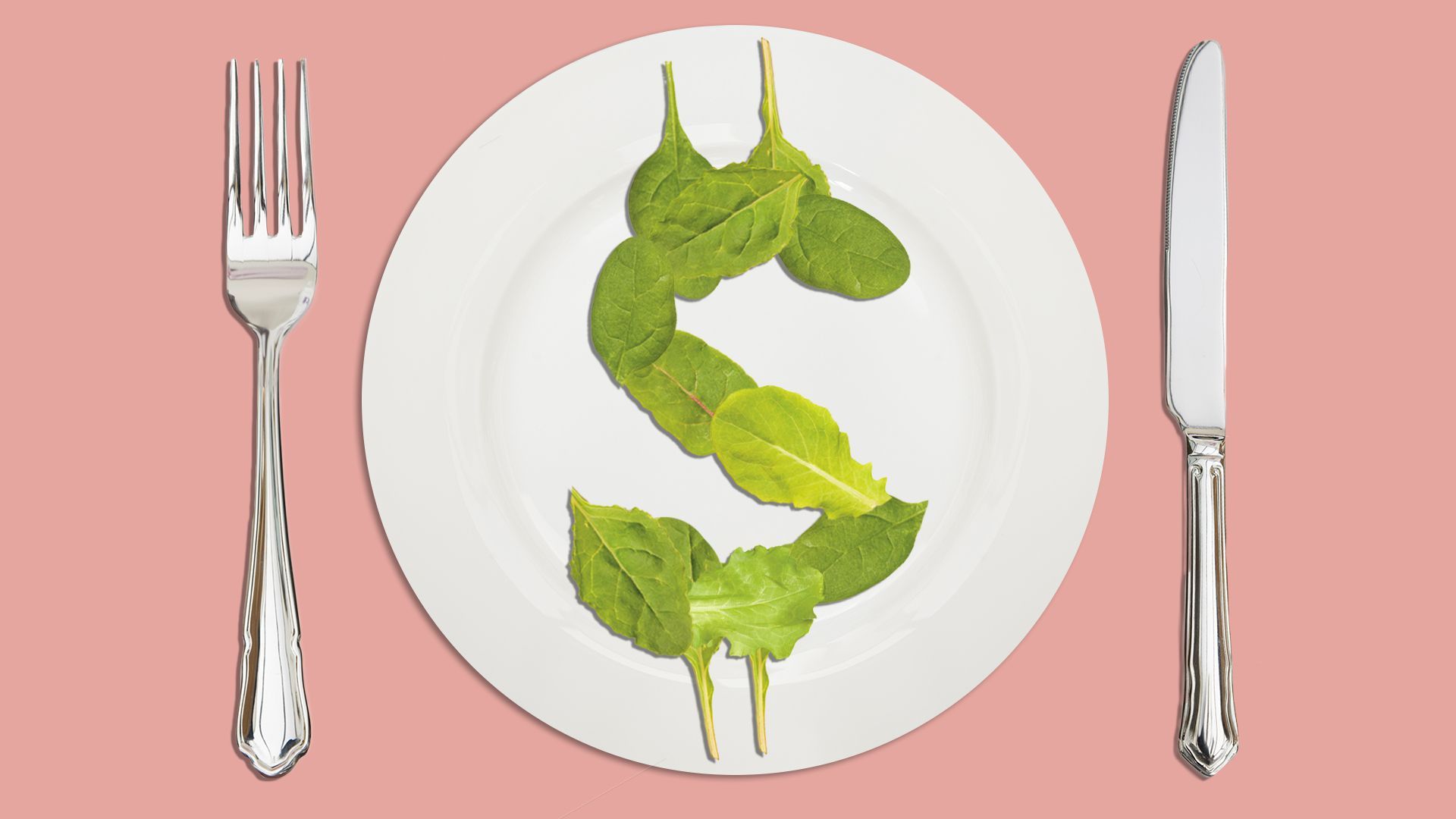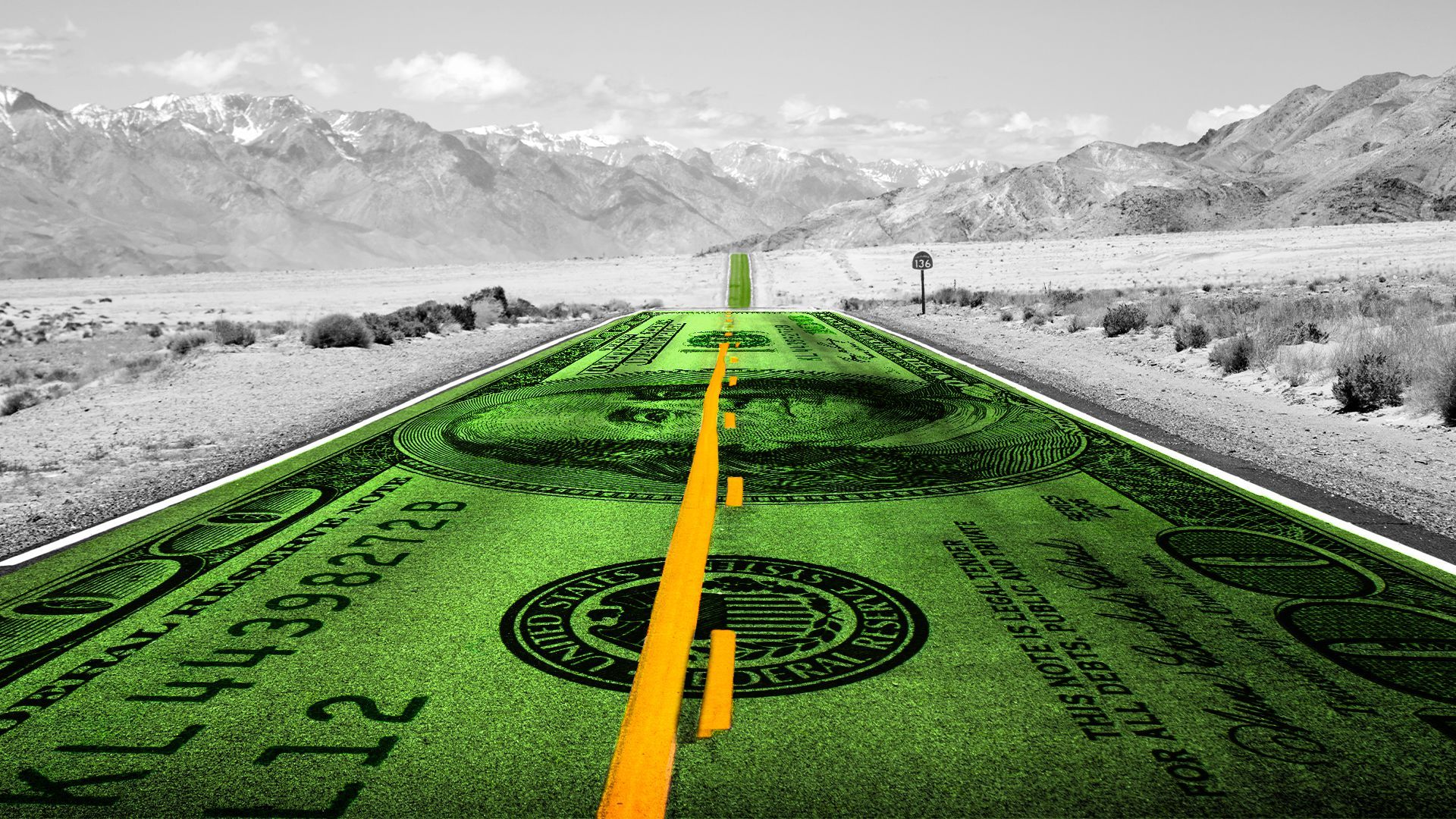| | | | | | | Presented By Capital One | | | | Axios What's Next | | By Jennifer A. Kingson, Joann Muller and Alex Fitzpatrick · Nov 08, 2022 | | Climate change won't kill salads anytime soon — but it might change what's in them, Jennifer reports today. Today's newsletter is 1,173 words ... 4½ minutes. | | | | | | 1 big thing: The future of lettuce |  | | | Illustration: Shoshana Gordon/Axios | | | | the lettuce supply chain Hydroponic lettuce grown indoors, long regarded as niche, is edging into the mainstream as climate change hits outdoor growers and the salad-lovers who depend on them, Jennifer A. Kingson reports. - Greenhouses enable "proximity growing" — a hot industry term — where lettuces are shipped shorter distances to markets, saving on freight costs and emissions.
- The rise of indoor growing comes with a new category: "Teen" lettuce, which is larger and crispier than baby greens, yet more tender than a mature head.
Why it matters: While indoor growing is no replacement for vast outdoor fields, it's expected to play a bigger role going forward — evening out the transition between summer and winter lettuce, and filling in when climate-related crop failures strike. Driving the news: With lettuce production migrating to Quebec, Vegpro International — Canada's largest fresh vegetable producer — has built a 10-acre greenhouse complex for growing hydroponic lettuce year-round. - It'll specialize in buttery teen leaves of romaine and other varieties, and ship primarily to Eastern Canadian stores and packagers — lending consistency to the lettuce supply and reducing logistics headaches.
- It's currently the "shoulder" season for lettuce, when U.S. production shifts from California to Arizona, and Vegpro's outdoor production moves from British Columbia to Florida.
What they're saying: "There's no doubt that a product grown outdoors will have a more robust texture," Luc Prévost, EVP of sales and marketing at Vegpro, told Axios. - But with indoor growing, "not only can you do it continuously, but there are very few surprises that can happen."
- Plus, Prévost adds, hydroponics are good for the lettuce supply chain. "When everybody is growing out of the same region ... then people have limited-to-no other options, and that creates panic in the industry. The more diverse the sourcing can be, the better."
Where it stands: Drought and crazy heat left California lettuces wilting and turning brown in the fields this past summer. - Competition for water among Western growers, meanwhile, could prompt them to ditch lettuce for more lucrative crops, such as avocados, nuts or citrus.
Yes, but: Outdoor growers in California produce about 70% of U.S. lettuce supplies, while Arizona growers furnish the rest. That's not likely to change anytime soon. - "You're dealing with a pretty resilient industry here," said Richard Smith of the University of California, Davis, a farm adviser on vegetable crop production and weed science.
- Hydroponic lettuces "are making a little bit of a dent in field-grown lettuce, but so far we're still growing a heck of a lot."
What's next: Bigger greenhouses and new lettuce-growing frontiers could bring fresh flavors and textures to North American consumers. - Teen lettuce is "a little bit bigger and a lot crunchier" than the baby leaves people are familiar with, Prévost said. "They're the type of leaf that could probably hold up to heavier dressings and toppings."
- "By bringing in a whole new texture, you're bringing in a new culinary experience," he said. "We're trying to bring a whole new portfolio of products to consumers."
Share this story. |     | | | | | | 2. Another shakeup in self-driving cars |  | | | Illustration: Shoshana Gordon/Axios | | | | A merger between two suppliers of lidar — a key autonomous vehicle technology — is the latest tremor in the quickly shifting world of self-driving cars, Joann Muller reports. - The tie-up between former rivals Ouster and Velodyne, announced Monday, comes less than two weeks after Argo.ai, a leading self-driving car startup, said it was shutting down.
The big picture: The race to develop self-driving cars led to a gold rush for lidar makers, many of which went public in the past couple of years. - However, their valuations have since plummeted as investors grew disillusioned with autonomous vehicle technology.
- Automakers are now largely turning their focus from fully autonomous driving to partially automated driver-assistance technology, which they're already selling.
How it works: Lidar ("light detection and ranging") sensors use invisible lasers to create highly detailed 3D maps of their surroundings. - They work alongside other sensors — such as cameras, radar and ultrasonics — to help vehicles "see" their surroundings.
Yes, but: Even if self-driving cars never go mainstream, there's still plenty of lidar sensor demand for use in driver-assist features and in other fields of robotics. Share this story. |     | | | | | | 3. More apps than an Applebee's menu |  | | | Illustration: Aïda Amer/Axios | | | | The number of workplace apps in use at any given company can make it feel like we're doing multiple jobs at once, Axios' Hope King writes. By the numbers: Workers are using an average of six to eight apps to perform a single task, Tori Paulman, senior director analyst at Gartner, told Axios. - A recent Harvard Business Review study suggests workers are switching from app to app, website to website, nearly 1,200 times a day — and this "toggling" consumes 9% of their work time annually.
What they're saying: "You might not be commuting into the office, but you're commuting from email to CRM and from CRM to [the web] and from the internet to [your phone]," Paulman said. - All that traveling requires additional cognitive energy and effort — to readjust mentally to a new application.
Read the rest. |     | | | | | | A message from Capital One | | The car-buying process needs more transparency | | |  | | | | Only 19% of car buyers believe the car-buying process is transparent, Capital One's 2022 Car Buying Outlook found. The solution: A hybrid car-buying experience — that's online and in-person — allows consumers to research online before going in person. Learn more about the future of car buying. | | | | | | 4. 📊 The busiest office days |  Data: Kastle; Chart: Erin Davis/Axios Visuals Most office workers are starting and ending their week at home, Axios' Emily Peck reports. What's happening: Tuesdays and Wednesdays have become the most popular days for in-person office work, according to employee swipe card data analyzed by security firm Kastle. - There's a network effect happening here: Because more employees regularly come in on these days, more of their coworkers will show up to see them.
💬 Alex's thought bubble: If you need a quiet place to get work done, try your office on Mondays and Fridays. Share this story. |     | | | | | | 5. Schools aren't spending COVID $$$ fast enough |  | | | Illustration: Natalie Peeples/Axios | | | | Schools are failing to effectively use billions of dollars in federal COVID-19 funding before a looming deadline, experts told Axios' Erin Doherty. - "What school districts are doing now is the equivalent of just shooting bottle rockets at the moon," said Thomas Kane, a Harvard economist and expert on pandemic achievement loss.
Driving the news: Test scores released last month showed the largest math declines on record for fourth- and eighth-graders. - No state showed improvements in their math scores, and reading scores dropped to 1992 levels, according to the results from the National Assessment of Educational Progress (NAEP).
- "The NAEP scores ... really raised that question about whether or not the money is aligned in a way that's going to fix this problem," said Marguerite Roza, the director of Georgetown University's Edunomics Lab.
Zoom out: In March 2021, the Biden administration announced $122 billion in American Rescue Plan funding to help reopen schools, beef up staffing, implement mental health programs and more. - Those funds expire in September 2024.
State of play: Some schools are using the funding for various programs, but not on the scale needed for academic recovery, Kane said. - Plus, there's a lack of widespread metrics to assess such efforts — and schools are slow to switch gears if something isn't working.
The big picture: "The questions people should be asking their school districts is: 'What is your investment to remedy these gaps, and do we think it's going to work, and what are we seeing so far?'" Roza said. Read the rest. |     | | | | | | A message from Capital One | | The state of car buying | | |  | | | | More than 75% of car buyers believe dealerships should provide more upfront information about pricing and financing, Capital One's 2022 Car Buying Outlook found. In other words: Consumers want the car-buying process to be more transparent. Learn more about the state of the industry. | | | | Big thanks to What's Next copy editor Amy Stern. Was this email forwarded to you? Get your daily dose of What's Next by signing up here for our free newsletter. |  | | Are you a fan of this email format? It's called Smart Brevity®. Over 300 orgs use it — in a tool called Axios HQ — to drive productivity with clearer workplace communications. | | | | | | Axios thanks our partners for supporting our newsletters. If you're interested in advertising, learn more here.
Sponsorship has no influence on editorial content. Axios, 3100 Clarendon Blvd, Arlington VA 22201 | | | You received this email because you signed up for newsletters from Axios.
Change your preferences or unsubscribe here. | | | Was this email forwarded to you?
Sign up now to get Axios in your inbox. | | | | Follow Axios on social media:    | | | | | |
Post a Comment
0Comments